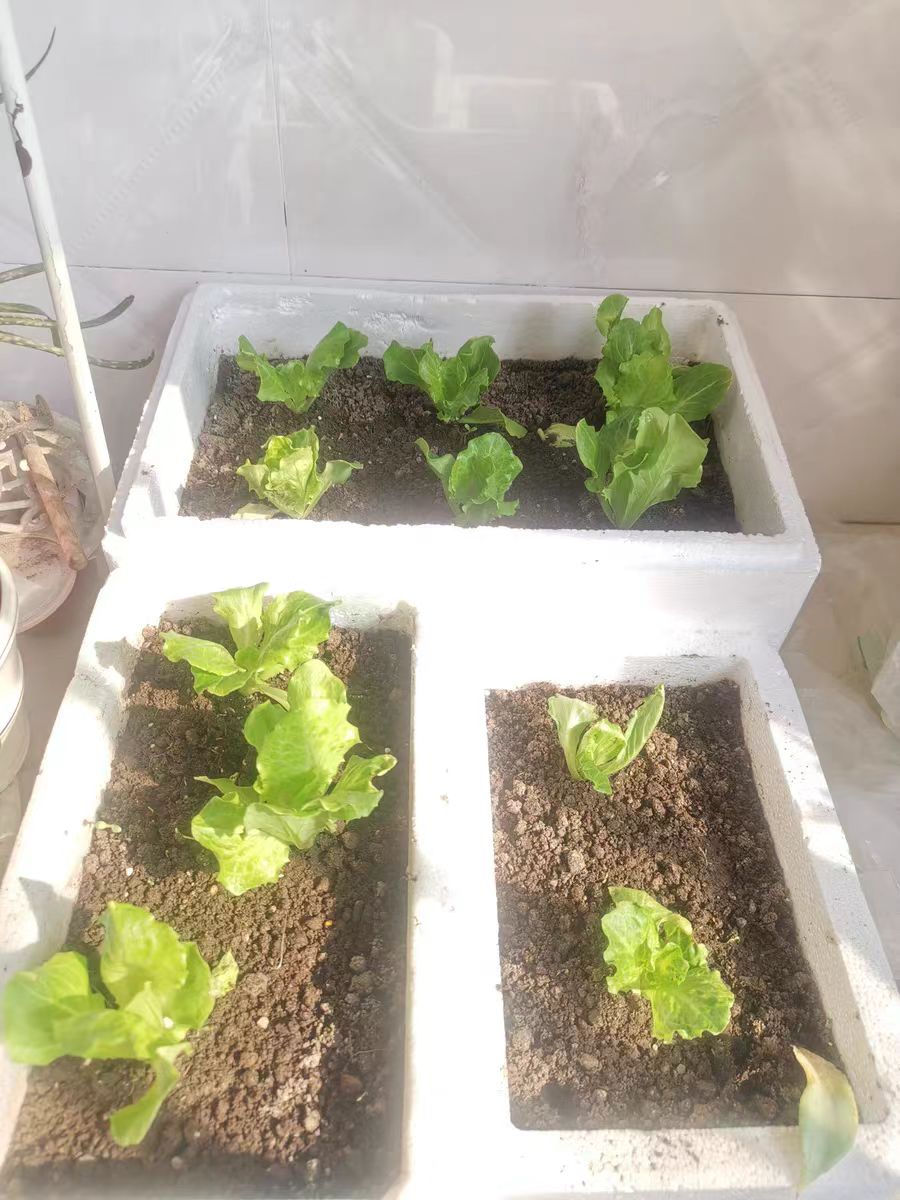When we grow vegetables in our daily lives, we all hope to choose varieties that are easy to grow, yield well, and ideally can be planted throughout the year. Today, I will introduce several types of vegetables that are particularly suitable for ordinary families to grow, whether in small balcony pots or small vegetable plots in the yard—they are all easy to handle.
First, let's talk about lettuce, a "regular" in both vegetable markets and family dining tables. Lettuce prefers a slightly cool environment and is somewhat cold-resistant and heat-tolerant. Its seeds germinate fastest at 15-20°C, which is roughly the temperature after spring warms up or during the cool autumn days. However, when it's too hot in summer, we can set up a sunshade for it, and in winter, move it back to the balcony or greenhouse, so we can always have fresh lettuce to eat. There are many varieties of lettuce, including loose-leaf and head-forming types. When planting, choose fertile, well-drained soil and keep the soil moist but not waterlogged. After sowing the seeds, they can be harvested in about 30-40 days, and the leaves can be picked multiple times—after one harvest, another batch grows, making it especially suitable for those who want to eat fresh vegetables at any time.
Like lettuce, another "regular" on our dining tables that's suitable for year-round planting is chives. Chives are perennial vegetables; planting them once allows you to enjoy them for several years, which is particularly cost-effective. They prefer a cool climate—in winter, the above-ground parts wither, but the underground rhizomes are tenacious and can safely overwinter in the soil, sprouting again when spring warms up. Chives have low soil requirements, though fertile soil helps them grow stronger. We can sow seeds or directly plant by division. Regular fertilizing and watering, and when the chives reach the right height, they can be harvested. After harvesting, applying additional fertilizer will quickly grow new leaves, batch after batch, almost endlessly.
After talking about these four-season vegetables that require a little attention, let's introduce two "lazy vegetables" that almost need no worry. The first is purslane, which many people may have seen by roadsides or in fields. It has extremely tenacious vitality, is drought-resistant and barren-tolerant, and can grow lush even in nutrient-poor soil. Purslane likes a warm, dry environment. Its seeds are very small—after sowing, cover them with a thin layer of soil and keep the soil slightly moist. It hardly needs fertilizing and has very few pests and diseases, so even beginners can easily grow it. Its tender stems and leaves can be stir-fried or used in soups, and they also have the effect of clearing heat and detoxifying, making them healthy and worry-free.
Another lazy vegetable is garlic, which I believe no kitchen can do without. Garlic is extremely easy to plant—simply insert garlic cloves into the soil, keep the soil moist, and they will quickly germinate. Garlic is highly cold-resistant and can be planted in the open ground even in winter; just provide (proper) shade when it's hot in summer. It has loose soil requirements, though fertile soil makes garlic grow larger and plumper. During the growth period, it requires little management—just regularly weed to prevent weeds from competing for nutrients. Both the leaves and bulbs of garlic are edible: the leaves can be used as a side dish, and the bulbs are the garlic heads we commonly use for stir-frying and seasoning. Planting some garlic allows you to pick it fresh from the ground whenever you need it.
These vegetables each have their own advantages: lettuce and chives can be planted year-round, ensuring we always have fresh leafy greens; purslane and garlic are easy to grow and require little care, making them perfect for busy people or those just starting out with vegetable gardening. You can plant some in your balcony or courtyard according to your situation, enjoying both the fun of gardening and the health benefits of homegrown vegetables—what's not to love?
What vegetables can be planted all year round?

Share with
Tagged in :




Leave a Reply